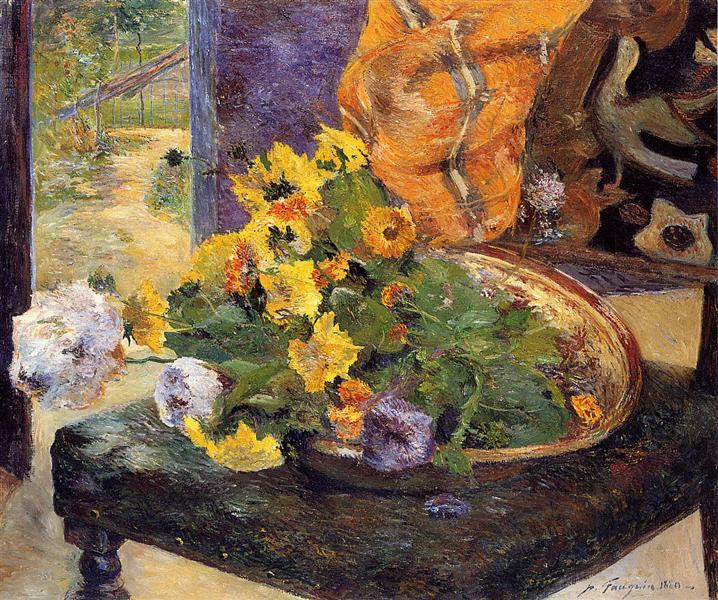Description
Paul Gauguin's painting "To Make a Bouquet," created in 1880, is a fascinating example of the artist's approach to exploring everyday life and the aesthetics of nature. Known for his post-impressionist style and his search for a deeper connection with the primitive, Gauguin captures in this work an essential moment in which the simplicity of activity turns the ordinary into an object of beauty.
The composition is dominated by the figure of a woman who is in the process of collecting flowers, suggesting an intimate relationship between human and nature. The figure, depicted with vibrant colors and simple outlines, is framed in an environment filled with life through its richly colored flowers. The use of color is particularly notable in this work; shades of green and yellow predominate, describing not only a moment of collecting, but also the essence of the flora surrounding the woman. Gauguin’s color palette here evokes feelings of warmth and proximity, while his chromatic choices are key to conveying the joy and vitality of the act itself.
The woman, dressed in traditional dress, represents a figure that is both archetypal and specific, aligning with Gauguin’s interest in culture and traditions. Although her face is schematic, her posture and gestures are expressive, encapsulating the dedication and connection one has with nature. In this work, there is no sense of linear time; the elements seem to be suspended, creating an almost timeless atmosphere. This approach is typical of Gauguin’s work, who sought to go beyond mere representation to find a deeper truth in his subjects.
In the background, the space is filled with a dense floral arboretum, which gives an almost magical character to the scene. It is suggested that nature is an almost mystical environment in which the woman immerses herself, reinforcing the symbiotic link between the human being and the natural world. This interaction between the figure and its environment is a recurring theme in Gauguin's art, which starts from personal observation to offer a more subjective and emotional perspective.
"To Make a Bouquet" can also be seen in the light of post-impressionist art, which seeks not only to capture the visual appearance of a moment, but also a deeper exposition of the emotion and essence of the moment. The use of flat colors and simplified forms is indicative of Gauguin's desire to go beyond objective reality and explore the evocative feelings that an artistic sentiment can articulate.
Since its creation, this work has gained relevance not only for the artist's technique, but also for its contribution to the conversation around symbolism and the representation of the everyday in art. When considering "To Make a Bouquet", one recognizes not only a moment of human connection with nature, but also a fragment of Gauguin's emerging mastery that would later develop in his works in Polynesia and in his search for the exaltation of aesthetic experience. It is in this type of work that we can glimpse the path marked by modern art, a path in which the personal and the universal are intertwined with the naturalness of everyday gestures.
KUADROS ©, a famous painting on your wall.
Hand-made oil painting reproductions, with the quality of professional artists and the distinctive seal of KUADROS ©.
Painting reproduction service with satisfaction guarantee. If you are not completely satisfied with the replica of your painting, we will refund 100% of your money.

